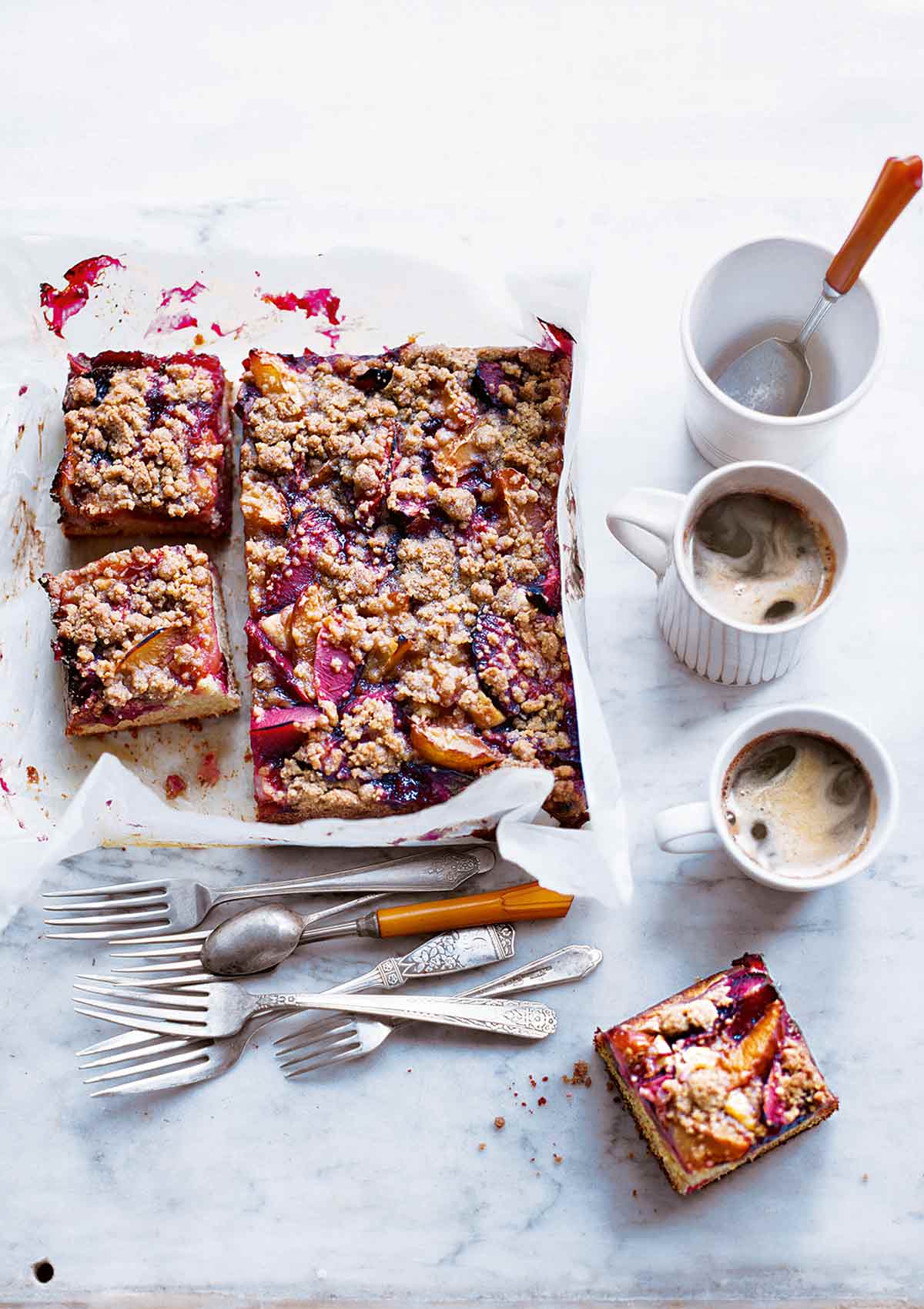
This enriched dough has more in common with a cake than bread and is ideal to serve for a late breakfast, brunch, or mid-morning treat with a pot of steaming coffee. It’s best eaten on the day of making but will reheat well if wrapped in foil and placed in a medium oven for a few minutes.
You can prepare the dough the night before and let it rise in the fridge overnight before topping and baking. I like to use a mixture of plums for this cake, not only for flavor but for color too.–Annie Rigg
Plum Kuchen FAQs
This German plum cake is pronounced KOO-ken. Fun to say, even better to eat.
Use a paring knife to carefully cut around the circumference of the fruit from the stem-side downward, then twist the halves apart so you can see the seed (stone). Gently squeeze the half that holds the stone to loosen it, then remove it. Lay your plum halves flat side down on a cutting board. Slice to whatever thickness you prefer.
Store, covered, at room temperature for up to 3 days.
Italian prune plums are ideal, but any type of fresh plum will work here. Choose ripe, juicy fruit that gives slightly when gently squeezed.
More Super Plum Recipes
Write a Review
If you make this recipe, or any dish on LC, consider leaving a review, a star rating, and your best photo in the comments below. I love hearing from you.–David
Want to Save This?
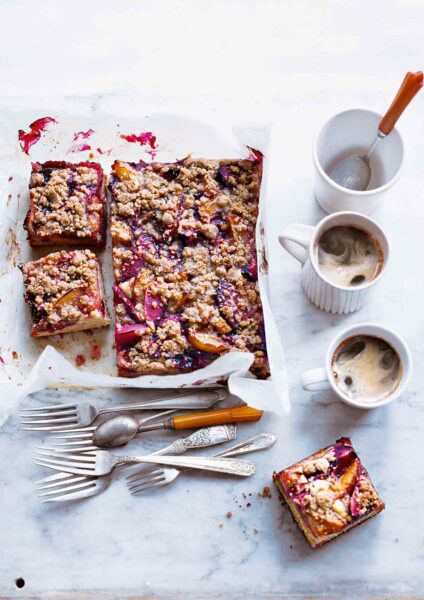
Plum Kuchen
Ingredients
For the cake
- 9 tablespoons (4 1/2 oz) unsalted butter, diced and softened, plus more for the pan
- 1/2 cup whole milk
- 2 1/2 cups all-purpose flour
- 2/3 cup granulated sugar
- 1/2 teaspoon ground cinnamon
- 1/4 ounce fast-acting dried yeast
- A good pinch salt
- 1/3 cup sour cream or buttermilk, at room temperature
- 1 medium egg
- 1 medium egg yolk
- 1 teaspoon finely grated lemon zest, preferably organic
- 1 teaspoon vanilla extract
- 1 1/4 pounds plums, rinsed and sliced into sixths or eighths (about 4 plums)
For the streusel
- 1/4 cup light brown sugar
- 1/4 cup dark or light brown sugar
- A good pinch salt
- 1/2 teaspoon ground cinnamon
- 2/3 cup all-purpose flour
- 4 tablespoons (2 oz) unsalted butter, melted
Instructions
Make the cake dough
- Butter an 8-inch (20-cm) square cake pan and line the bottom and sides with buttered parchment paper, allowing the parchment to hang over the sides of the pan.
- Warm the milk in a small saucepan over low heat until 110°F (43°C) or a shade warmer than body temperature. Do not let the milk even come close to boiling.
- Put the flour in the bowl of a stand mixer fitted with a dough hook. Add the granulated sugar, cinnamon, yeast, and salt and mix with a balloon whisk to thoroughly combine. Make a well in the middle.
- In a bowl or large measuring glass, combine the sour cream or buttermilk, whole egg, yolk, lemon zest, and vanilla extract. Pour the warm milk into the mixer bowl, add the sour cream mixture and softened butter, and knead on medium speed for 4 to 6 minutes, until you have a smooth dough that's almost sorta like a thick cake batter.
- Scoop the dough into the prepared pan and spread level using a palette knife. Cover loosely with plastic wrap and either let the dough rise slowly overnight in the fridge or for 2 to 3 hours at room temperature.
☞ TESTER TIP: The dough may not rise appreciably. On the other hand, it may double in size. Either way is okay.
- If you left the dough overnight in the fridge, bring it to room temperature before proceeding.
Make the streusel
- Mix the sugars, salt, cinnamon, and flour in a small bowl. Add the melted butter and stir well to combine—the mixture should start to form large clumps.
Assemble and bake the kuchen
- Preheat the oven to 375ºF (190°C).
- Scatter 1/3 of the streusel over the cake. Arrange the plum slices on the streusel. Scatter the remaining streusel over the plums.
- Place the pan containing the kuchen on a rimmed baking sheet lined with aluminum foil. Bake for 20 minutes. The dough will probably have puffed to the top of the pan.
- Reduce the heat to 350ºF (177°C) and continue to bake until the cake has risen even more, the streusel is golden and crisp, the fruit is tender, and a tester inserted in the center of the cake comes out clean, 40 to 50 minutes more.
- Let the kuchen cool in the pan until warm or room temperature before slicing. It’s best eaten on the day of making but will reheat well if wrapped in foil and placed in a warm oven for a few minutes.
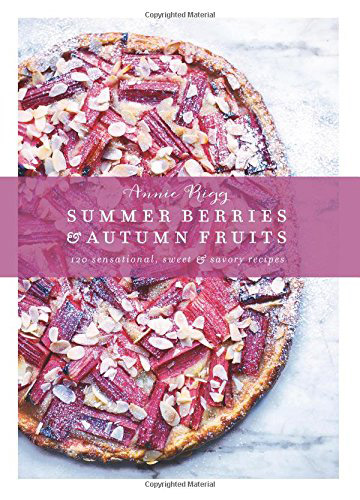
Explore More with AI
Nutrition
Nutrition information is automatically calculated, so should only be used as an approximation.
Recipe Testers’ Reviews
Delicious plum kuchen that’s wonderful anytime of the day—for breakfast, with afternoon tea, or as an after-dinner dessert! It’s not overly sweet, which is always a good thing when you want seasonal fruit to be the star.
The dough is easy to mix, and I love that it rises only once right in the baking pan.
It’s true that this kuchen is best if enjoyed the day it is baked. It was slightly drier the next day when kept at room temperature, and refrigeration made it stiffer. So do take advantage of the reheating instructions if you have some left over.
I bet this cake would be just as good made with other summer fruit such as peaches, apricots, and sour cherries. It’s not yet the plum season where I live, but plumcots were available.
The sweetness of the streusel wasn’t too much, but the flavor of the dark brown sugar was a bit too deep and heavy for the fresh fruit. I would use all light brown sugar next time.
This German plum kuchen is an easy yet delicious version of a German crumb cake. The addition of plums results in a tart, juicy cake worthy of breakfast, brunch, or even dessert. I planned for this to be a breakfast treat, along with a good strong cup of coffee.
I prepared my dough the night before and let it rise in the refrigerator as directed. While mixing the wet into dry ingredients, it took more than the 4 minutes suggested time to thoroughly mix it into a dough. It looked more like a very thick cake batter. It was spread evenly into a buttered, parchment-lined baking pan.
Personally, I feel an 8-inch square pan is way too small for this recipe. My 9-by-13-inch baking dish was the perfect size. I loosely covered the dough with plastic wrap and popped it in the fridge for the overnight rising. The next morning, the dough was firm and had risen some but not a very noticeable amount.
I prepared the streusel topping while allowing the dough to come to room temp. I cut the plums into eighths. They were very juicy. There was a nice ratio of crumb to fruit. It looked beautiful going into the preheated oven for the suggested 20 minutes. There was very little change in appearance after the 20 minutes.
The final result is wonderful. It is a crumb-covered, moist, and tangy cake that is delicious.

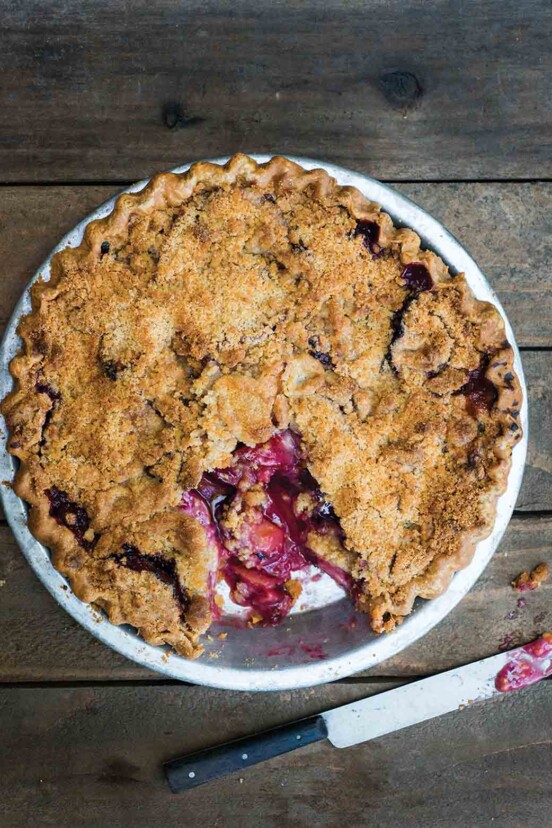
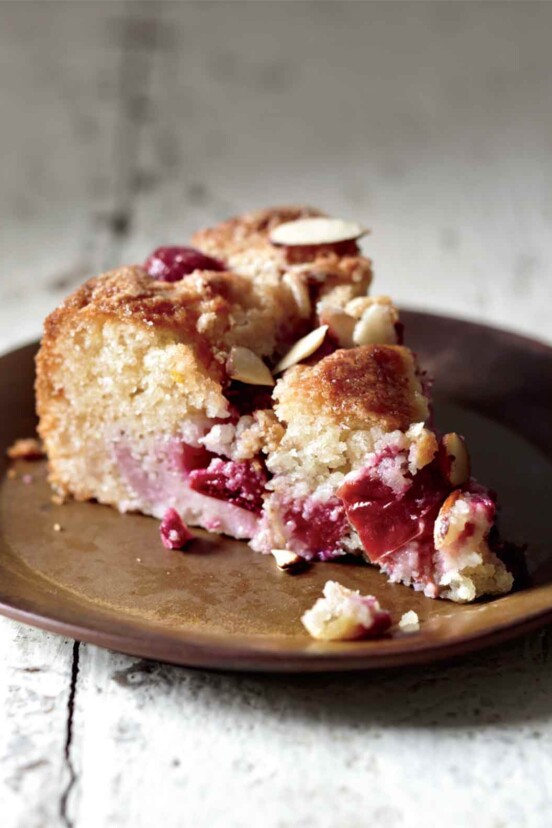
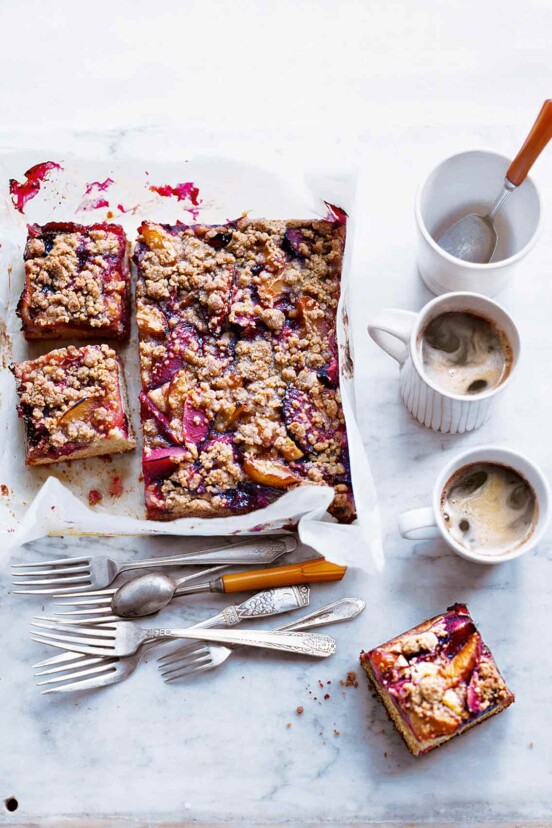











Can this be frozen? Or does it get soggy?
Lee, we haven’t tried freezing it, however, it should freeze ok. The streusel topping may not be a crispy after freezing and reheating. Make sure it’s completely cool before wrapping in several layers of plastic wrap. Thaw at room temperature or in the refrigerator overnight and warm through in a low oven. If you try it, do let us know how it turns out!
I hope you love it.
German Streusel Kuchens are traditionally made with yeasted doughs, so this is the rule rather than the exception. Between the kuchen and the streusel, seasonal fruits are spread or simply little butter pieces, making it a Butterstreuselkuchen (beware the German compound noun)!
Thanks for that, Stephanie!
And I had never used brown sugar of any kind until I came to the USA, I know neither my mother, nor my granny knew what that is. The Streusel I grew up with (in Germany) is made from unsalted butter, sugar, flour and a little cinnamon.
Dagmar, I grew up with a German grandma and the streusel on her rhubarb pie was made same as yours, minus the cinnamon, and it is, to me, the most magnificent streusel ever.
Yes! Try that on a tart cherry pie and you are in heaven!
I have cherries in the fridge and I shall! Thank you.